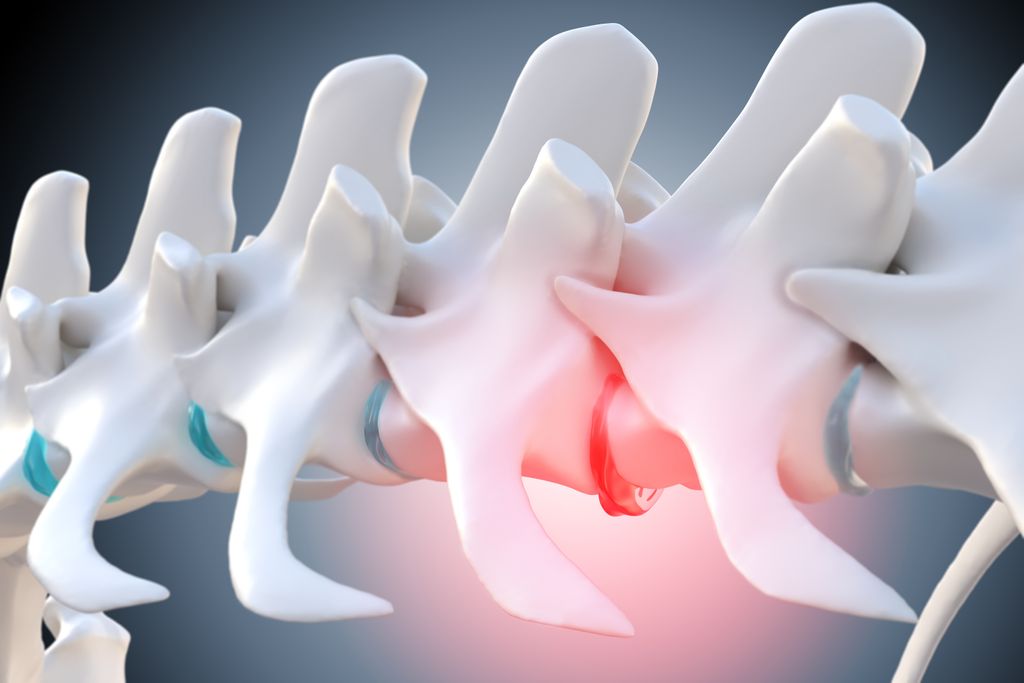Science & Vie: Hi Atma, can you tell us your background? Are you a PhD student at École Polytechnique de Montreal?
Atma Adoungotchodo: “Welcome to Science and Knowledge and thank you for letting me talk about my thesis project. I am currently completing my PhD in Health Technologies at High School of Technology. I have an undergraduate degree in Biomedical Engineering from École Polytechnique in Montreal. This internship opened my appetite for medical research by introducing me to the many techniques that remain to be developed to improve or develop new treatments or more accurate diagnostic methods. So, in the logical continuity of things, I got my Ph.D. “
Science & Vie: You just won this finalist of the international competition “My Thesis in 180 Seconds” with your work on designing an injectable bio-hydrogel for intervertebral disc regeneration. What prompted you to work on the subject of back pain?
Atma Adoungotchodo works on a hydrogel capable of rebuilding worn out intervertebral discs, which are sources of intense pain.
Atma Adouungotchodo: “I wasn’t aware of this disease before I started my thesis project. I get back pain from time to time, like everyone else, but I didn’t realize there were people that could disable it. I started this project because I was concerned. Primarily working on regenerative medicine, the goal of which is to repair and restore body tissues.
The natural processes are so well done, so well thought out and executed that it is difficult to come up with treatments that are exactly like the body. So I want to help the organization regain control of itself rather than doing it for it. This is the goal of my project: I seek to help discs repair themselves and resume their functions rather than replace them with synthetic materials. This is what drew me to work on this project. I’m very happy that this goes for the back pain problem that afflicts so many people, much more than I could have imagined. “
Science & Vie: Your thesis highlights a hydrogel that allows intervertebral discs to re-swell. How it works?
Atma Adoungotchodo: Simply put, a hydrogel is a substance that acts as an implant to strengthen the affected disc. The interesting part is that it contains cells and biologically active elements that will over time stimulate them to “repair” and renew themselves so that they perfectly restore their initial biomechanical properties.
The great thing about the material we use is that it is temperature sensitive. At 25°C, it is a liquid, and at 37°C, which is the temperature of the human body, it becomes solid. So it can be injected easily with a syringe, without the need for back surgery to hold it in place. “
Atma compares a healthy intervertebral disc to a well-inflated pillow. With age, this cushion tends to shrink resulting in friction between the vertebrae and a very painful crush of nerves. Atma’s hydrogel, intended to “re-inflate” the intervertebral disc, also contains chitosan, a polysaccharide extracted from the shell of some crustaceans, as well as components intended to strengthen the cells in the gel.
The science and knowledge: Your hydrogel opens up the possibility that you may be able to dispense with surgery to treat vertebral disc destruction in some patients. Do you have any idea how long it will take to get there? What future do you want to discover?
Atma Adongochodo: “I will be working on this project for nearly five years. We are just beginning. We have successfully demonstrated the concept, but what follows will require the participation of biomedical companies that have the experience and resources to complete this type of project.
I have no idea what will happen after my message. Therefore, in order for this technology to be used at all with patients with intervertebral disc degeneration, I would like biomedical companies to be interested in this topic.
There are currently surgical methods for treating this type of pathology. Remember, however, that these methods are not suitable for everyone and do not really solve the problem. There are people who, today, are doomed to live their whole lives with this unbearable pain, because surgery cannot be performed on them for various reasons.
I’ve already spoken to some of them who were interested in where my technology is. I was completely helpless in the face of their displeasure because even though I am working on a replacement, I realize that with the existing resources it would take a long time. However, they need a solution to their pain ASAP!
We see very well with the COVID-19 pandemic how research can develop rapidly when the necessary resources are mobilized. I don’t demand the same amount of attention to my topic, but I sincerely hope it won’t stop when I finish my thesis. “

“Subtly charming problem solver. Extreme tv enthusiast. Web scholar. Evil beer expert. Music nerd. Food junkie.”

